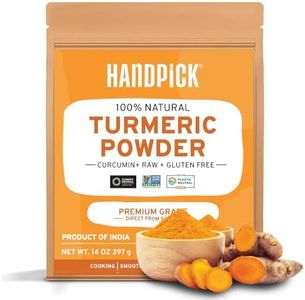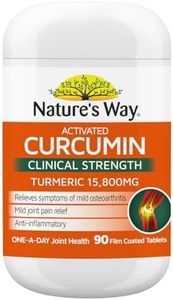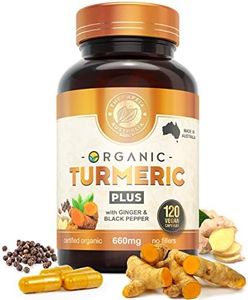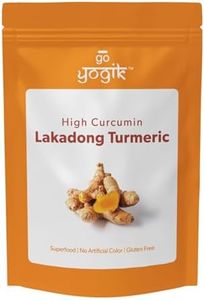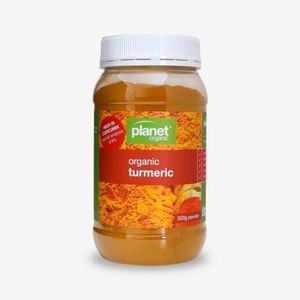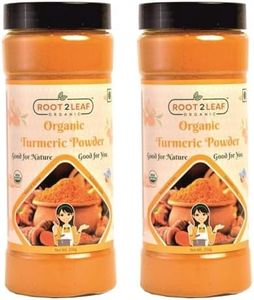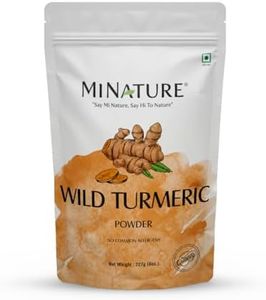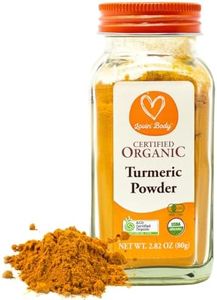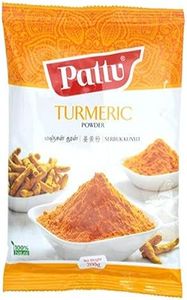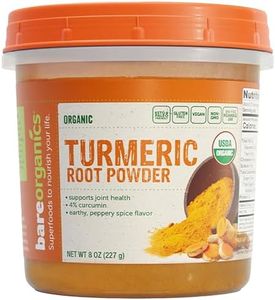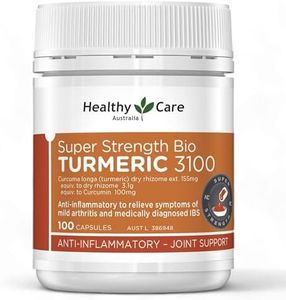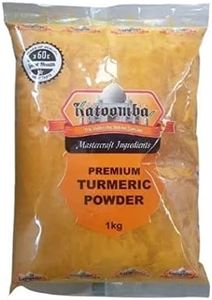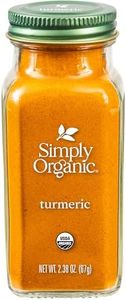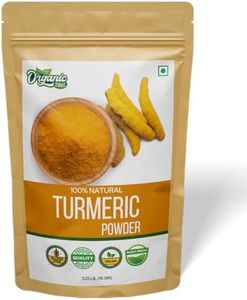We Use CookiesWe use cookies to enhance the security, performance,
functionality and for analytical and promotional activities. By continuing to browse this site you
are agreeing to our privacy policy
10 Best Turmeric Powder
From leading brands and best sellers available on the web.Buying Guide for the Best Turmeric Powder
Choosing the right turmeric powder is all about finding a product that fits your purpose, whether it’s cooking, making teas, or using it for health reasons. Turmeric powder should be fresh, aromatic, and vibrant in color. Since it’s a natural product, there can be big differences in taste, potency, and quality. Pay attention to the details to end up with a powder that meets your needs.PurityPurity refers to how pure the turmeric powder is—meaning it doesn’t contain fillers, artificial colors, or other additives. Pure turmeric is important because it ensures you’re getting the full benefit of the spice without unwanted extras. Usually, the ingredient list should only mention turmeric. If you see other ingredients or unknown chemicals, it’s likely less pure. For those using turmeric for health or medicinal purposes, or for authentic cooking, high purity is essential. Look for brands that are transparent about their sourcing and production methods.
Curcumin ContentCurcumin is the active ingredient in turmeric that provides many of its health benefits and its deep color. The curcumin percentage can vary from product to product, commonly ranging from 2% to 5%. A higher curcumin content means stronger color and potentially greater health benefits, but the taste can also be more pronounced and sometimes more bitter. If you want turmeric mainly for cooking, a standard curcumin content is adequate. If you are interested in maximum health benefits, you might prefer a product that emphasizes its higher curcumin content.
Color and AromaThe color and aroma of turmeric powder can tell you a lot about its freshness and quality. Good turmeric powder should be a bright, deep yellow to orange, and have a strong, earthy aroma. Pale or dull turmeric may be stale or diluted. Smell is a good indicator—fresh turmeric has a warm, distinctive fragrance. If you need turmeric for vibrant dishes or drinks, prioritize freshness and color. If aroma is important for you, such as in curries or lattes, make sure to choose a fragrant option.
Grinding FinenessFineness refers to how finely the turmeric is ground. Finer powder dissolves more easily in liquids and gives a smoother texture to recipes, while coarser powder can give grit and settle at the bottom. For beverages, sauces, or smooth pastes, a very fine powder works best. For dry rubs or some rustic dishes, a slightly coarser grind might be acceptable. Consider how you plan to use it when deciding how fine you want your turmeric powder.
Organic CertificationOrganic certification means the turmeric is grown without the use of synthetic pesticides or fertilizers. This is important for anyone who wants a cleaner, more natural product and is concerned with chemical residues. Certified organic turmeric often carries a seal or official mark. If you prefer all-natural foods or have sensitivities, this is a useful specification to look for. For everyday use, non-organic powder may be fine, but organic is generally considered the safer choice for those prioritizing quality and safety.
OriginThe country or region where turmeric is grown can affect its taste, color, and even potential contaminants. Popular sources include India, which is known for high-quality turmeric, but it can also come from other countries. Some people prefer turmeric from certain regions due to traditions or flavor profiles. If your recipes rely on a specific taste or you trust a particular region, look for turmeric powder that clearly states its origin.
